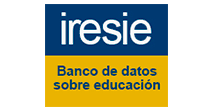A ESCOLA DA FRONTEIRA: DIVERSIDADE E CULTURA NA FRONTEIRA BRASIL – GUIANA
DOI:
https://doi.org/10.5216/ia.v32i2.3066Abstract
Este artigo discute as relações sociais no interior da escola da fronteira. Fronteira no sentido geográfico e simbólica. Assim, tem por objetivo mostrar que a escola da fronteira revela uma dinâmica própria caracterizada pelo trânsito físico e intercultural ali produzido. O artigo é parte da investigação realizada para compor a pesquisa da tese de doutorado intitulada: A ponte imaginária: o trânsito interétnico na fronteira Brasil–Guiana, cujo método foi à pesquisa etnográfica. As conclusões decorrentes do estudo realizado, entre outros aspectos, enfatizam o campo escolar como deficitário em políticas públicas que levem em consideração os aspectos particulares da fronteira; revela, também, que no interior da escola da fronteira os sujeitos sociais vivem relações tencionadas que expressa diferentes identidades étnicas e nacionais.Downloads
Downloads
Published
How to Cite
Issue
Section
License
Inter-Ação uses the Creative Commons Attribution 4.0 License for Open Access Journals (Open Archives Initiative - OAI) as the basis for the transfer of rights. Open access means making documents available on the Internet free of charge, so that users can read, download, copy, distribute, print, search, or link to the full text of documents, process them for indexing, use them as input data for software programs, or use them for any other lawful purpose, without financial, legal, or technical barriers.
Authors publishing in this journal agree to the following conditions:
1) Authors retain copyright and grant the journal the right of first publication, with the work simultaneously licensed under the Creative Commons Attribution License, which permits redistribution of the work with attribution and first publication in this journal.
2) Authors are permitted to enter into additional, separate agreements for non-exclusive distribution of the version of the work published in this journal (e.g., for publication in an institutional repository or as a book chapter), with attribution and first publication in this journal.
3) Authors are permitted and encouraged to publish and distribute their work online (e.g. in institutional repositories or on their home page) at any time before or during the editorial process, as this may generate productive changes as well as increase the impact and citation of the published work.















